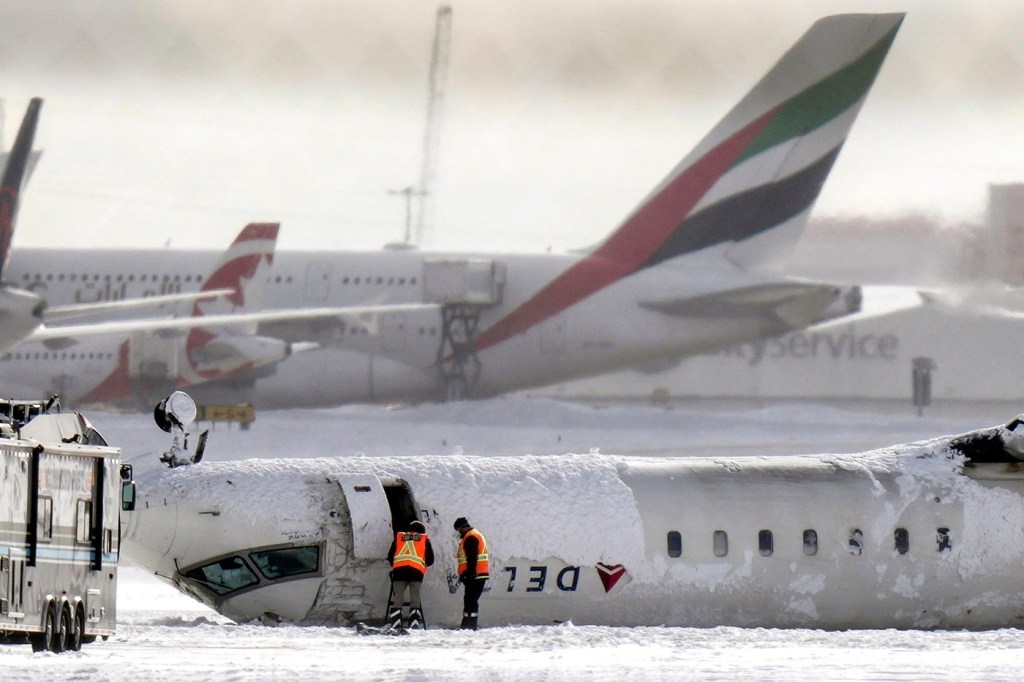Physicist explains what may have caused Delta Flight 4819 to flip over
“The underlying physics is quite simple,” says Arun Bansil, university distinguished professor of physics at Northeastern.

It was a dramatic and unusual sight: a Delta Air Lines passenger jet crash-landed on Monday at Toronto Pearson International Airport, skidding into flames on the runway before flipping upside down.
Investigators are working to identify what went wrong, but the physics involved is clear-cut, a Northeastern University expert says.
The reason for the turbulent landing aside, an imbalance in aerodynamic forces caused Delta Flight 4819 to turn over, says Arun Bansil, university distinguished professor of physics at Northeastern.
Editor’s Picks
“The underlying physics is quite simple. Various forces acting on the airplane must remain in proper balance for the airplane to fly, and to land and take off smoothly,” Bansil says. “If the forces become unbalanced around any axis of the airplane, then the airplane will start rotating around that axis.”
Video of the fiery landing shows the aircraft landing and immediately tilting to its right before flipping over, coming to a stop amid a dense cloud of smoke. Its right wing and tail had been sheared off during the crash.
Delta Air Lines Flight 4819 left Minneapolis-St. Paul International Airport on Monday morning.
Emergency responders were able to successfully extricate all 76 passengers and four crew members.
The incident is under investigation by the Canadian Transportation Safety Board and the U.S. National Transportation Safety Board and Federal Aviation Administration. Authorities say they’ve recovered the plane’s black boxes, which will help them reconstruct the events leading up to the crash.
Aviation tracking data from Flightradar24 pointed to tricky conditions at Toronto Pearson International Airport at the time of the crash, noting that they “indicated a gusting crosswind and blowing snow.” Initially, a Toronto fire official said that the “runway was dry and there were no crosswind conditions.”

Crosswinds are horizontal winds that blow perpendicular to the direction of an aircraft’s flight path. They can sometimes complicate pilots’ efforts to land a plane.
Bansil says the intensity of the wind could be implicated in the plane’s rightward tilt upon landing.
“A sudden gust of wind could cause the upward lift force on one wing to become much greater than that on the other wing and flip the airplane,” Bansil says. “One of the wings breaking and falling off would have a similar effect.”
He continues: “Hitting a snow or ice patch could tilt the plane and help flip it, although the runway was clear according to the news reports.”
As of Wednesday, there is no official word on what may have caused the crash.











